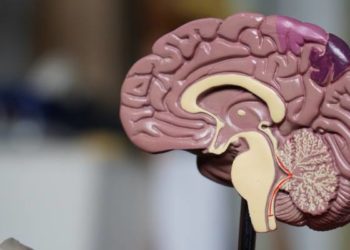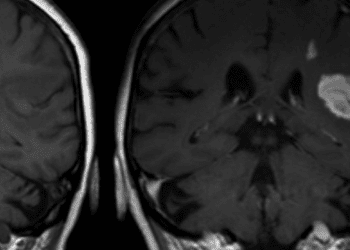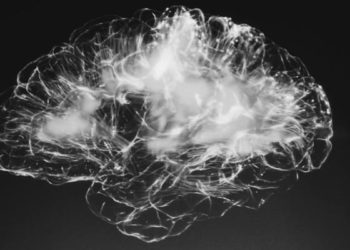Recent trends in stroke severity, unfavourable outcomes, and mortality compared by sex
1. This cohort study found an improvement in functional outcomes for patients of both sexes with ischemic, but not hemorrhagic, stroke in the past 20 years.
2. Women tended to be older, had more severe ischemic strokes, did not get acute reperfusion therapy, and had more unfavourable outcomes than men. Correcting for stroke severity and stroke history increased the number of favourable outcomes after an ischemic stroke in women.
Evidence Rating Level: 2 (Good)
Study Rundown: National stroke databases have shown trends in strokes have been changing in the last 20 years, with a slower rate of decrease of age-adjusted incidence and mortality, and worse outcomes in females than males. This is attributed to the older age of stroke, the tendency for social isolation, poorer pre-stroke activity levels, limited access to medical resources, and higher rates of depression in women. This study investigated the long-term changes in severity and functional outcomes of stroke by sex. Data from the Japan Stroke Data Bank (JSDB) on sex, age, stroke type, severity, history, and acute reperfusion therapy were used as variables in a statistical model assessing for stroke outcome and in-hospital mortality. Over the last 20 years, the JSDB data shows that stroke severity, unfavourable outcomes, and mortality have been decreasing for both sexes and all stroke types but have since remained stable. Intracranial hemorrhage (ICH) was shown to be associated with the highest severity and disability, while subarachnoid hemorrhage (SAH) was the most fatal. Women were older at the time of their stroke than men and had higher severity and disability. Women were less likely to get acute reperfusion therapy and had greater mortality due to ischemic stroke (IS) than men. However, women had less mortality associated with ICH and equal severity to men with SAH. After correcting for age, post-IS outcomes improved for both men and women. This study features a large sample size because of the database used. However, this still represents only 3% of the estimated total number of strokes in this population. Additionally, since most of the database-registered stroke centres are large, these results are not generalizable to small centres. There are also some inconsistencies in the database over the 20-year operation, namely that fewer sites were registered more recently. Patients with incomplete data that were excluded had lower NIHSS scores, suggesting exclusions may have been biased. Similarly, the criteria of diagnosing IS has changed over the 20 years as diagnostic technology advanced, during which data was collected. Finally, functional outcomes were collected at discharge but may not reflect the true long-term disability.
Click to read the study in JAMA Neurology
Relevant Reading: Sex differences in stroke: epidemiology, clinical presentation, medical care, and outcomes
In-Depth [retrospective cohort]: Data on demographic information, stroke type, history of stroke, and acute reperfusion therapy were extracted from the JSDB. The primary outcomes of stroke severity, mRS, and in-hospital mortality were trended over time. Statistical modelling adjusted for age (model 1), NIHSS scores and stroke history (model 2), and reperfusion therapy (model 3) to identify if sex alone altered favourable disability outcome or death. 135,266 patients registered in the JSDB went on to have an IS (39.8% women, median age = 74 years), 36,014 an ICH (42.7% women, median age = 70 years), and 11,800 a SAH (67.2% women; median age = 64 years). NIHSS scores, unfavourable functional outcomes, and mortality decreased in the last 20 years for both sexes and all stroke types (Women: OR = 1.020, 95% CI = 1.015-1.024; Men: OR = 1.015, 95% CI = 1.011-1.018), though at a decreasing rate to the point this decrease stopped in women (OR = 0.997, 95% CI = 0.991-1.003) and may have increased in men (OR = 0.990, 95% CI = 0.985-0.994). Patients who went on to have ICH had the highest NIHSS score. mRS score was highest, suggesting unfavourable outcomes, in patients with ICH. Patients who had SAH had the highest in-hospital mortality. Women with their first stroke were older than men for every stroke type. Women had higher NIHSS or WFNS and mRS scores, regardless of their stroke types. Women with IS experienced greater in-hospital mortality than men, but women with ICH had lower mortality. Female IS patients were less likely to get acute reperfusion therapy than males. Of the IS patients, cardioembolic IS patients were mainly female, older, and had higher NIHSS and mRS scores and mortality. WFNS scores in patients with SAH did not differ by sex. Favourable outcomes increased after age-adjustment in IS patients, but not after adjustment for stroke severity. For cardio-embolism and large artery atherosclerosis IS patients, favourable outcomes increased when correcting for age in both men and women, but only increased in women when correcting for stroke severity and history, and did not increase when correcting for therapy. IS outcomes improved when corrected for age, but not stroke severity and history or therapy for both men and women. Unfavourable outcomes increased in women when corrected by age. Unfavourable outcomes and death were less common after correcting for age or for stroke severity and history in women with ICH, but not in men. Unfavourable outcomes after SAH and deaths were less common when correcting for age and WFNS severity scores and stroke history in both sexes.
Image: PD
©2021 2 Minute Medicine, Inc. All rights reserved. No works may be reproduced without expressed written consent from 2 Minute Medicine, Inc. Inquire about licensing here. No article should be construed as medical advice and is not intended as such by the authors or by 2 Minute Medicine, Inc.







